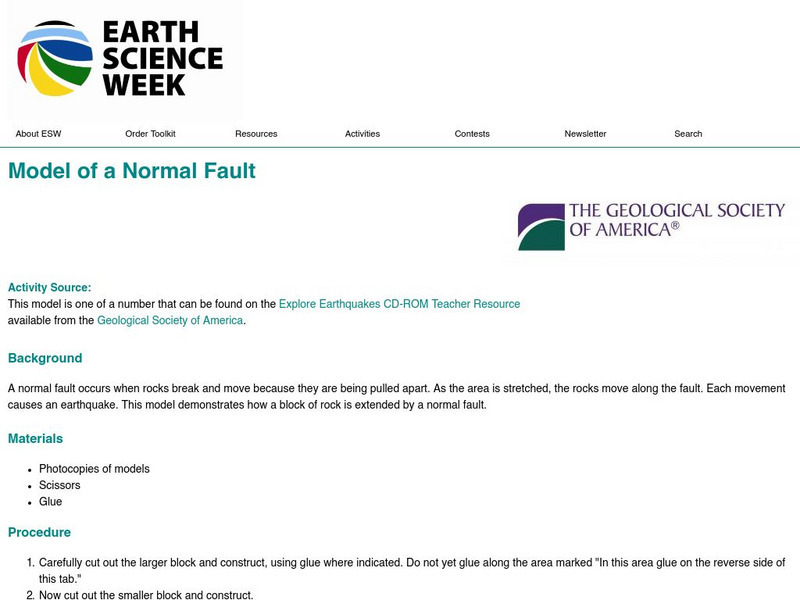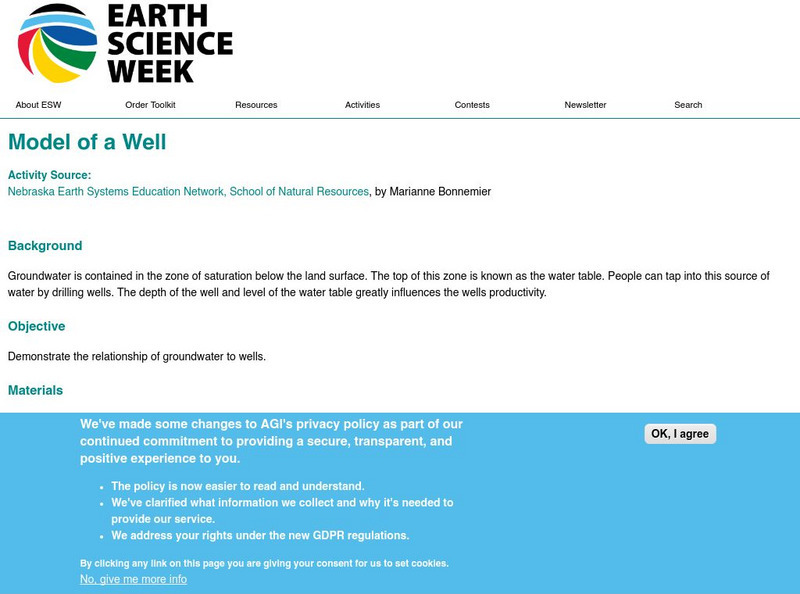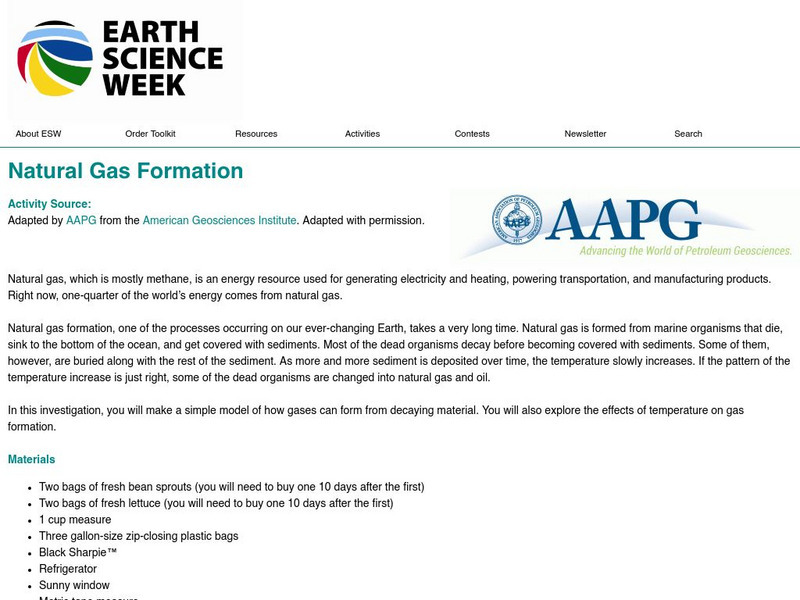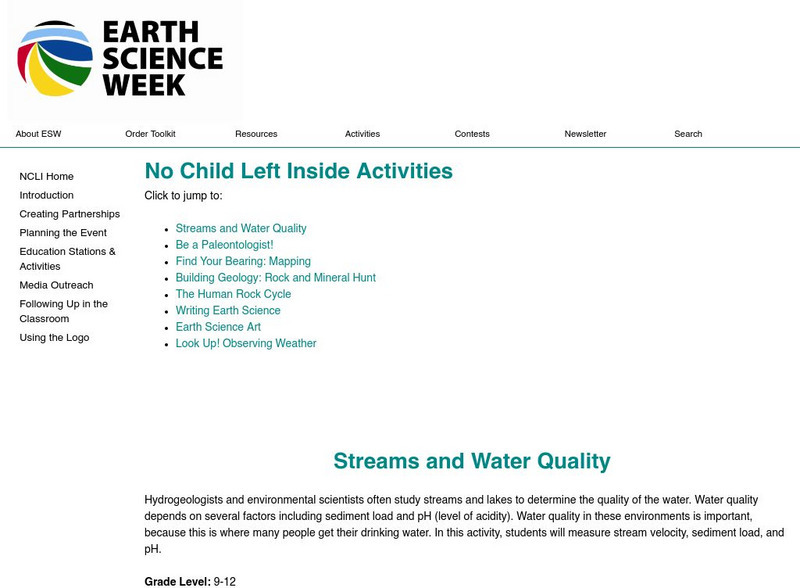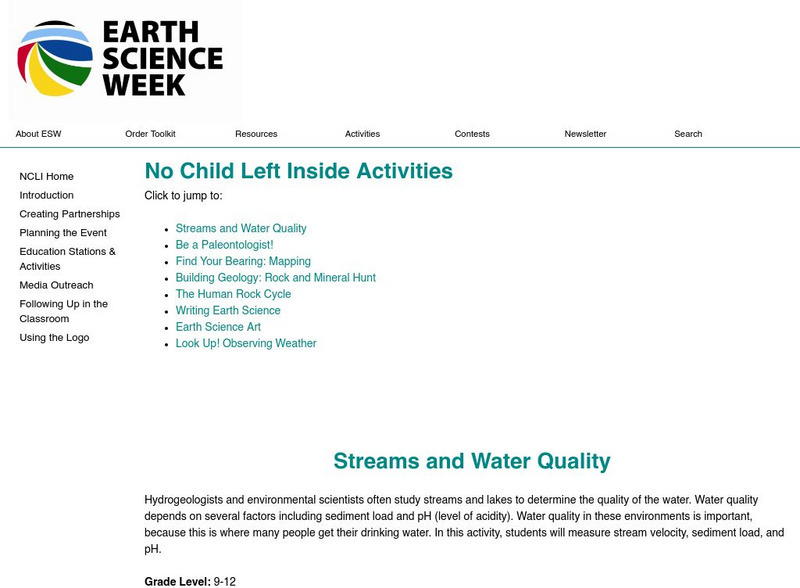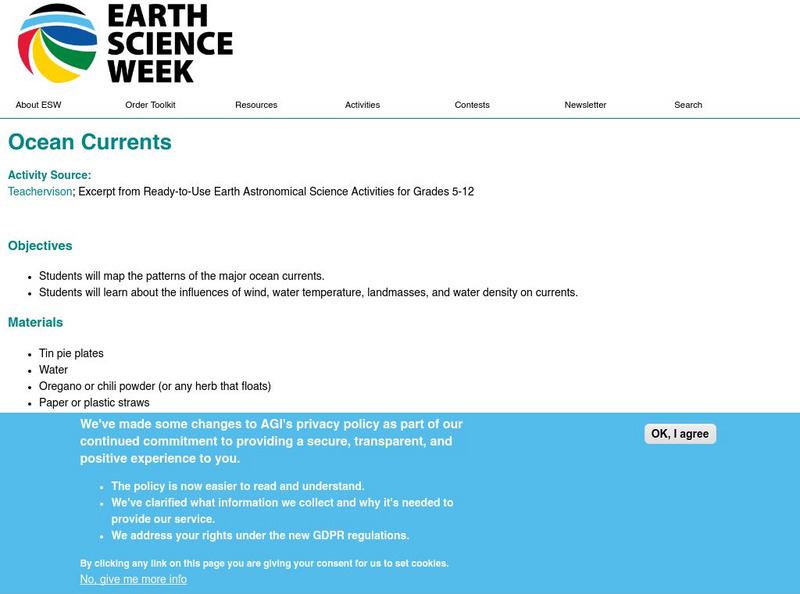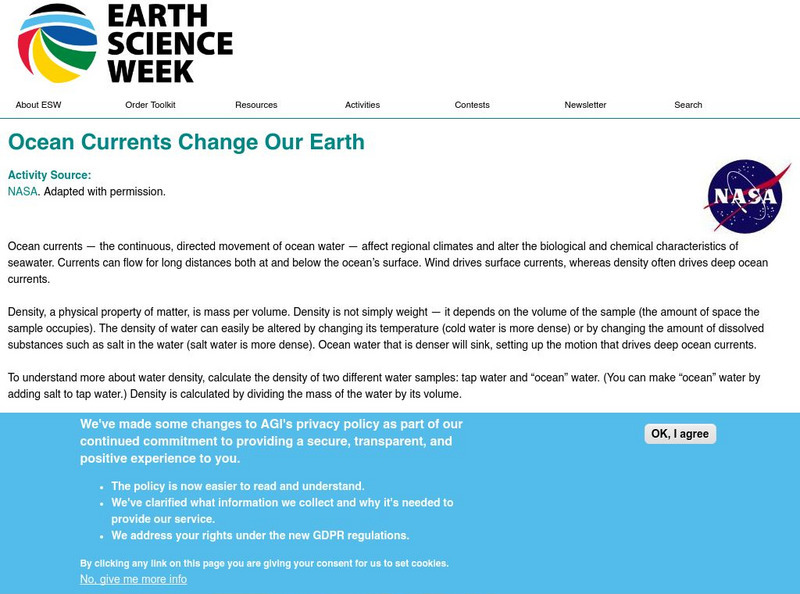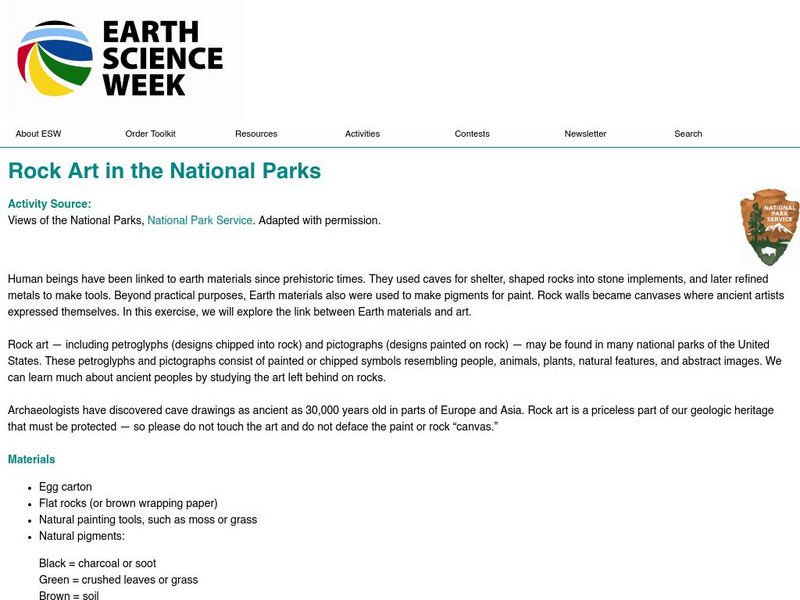American Geosciences Institute
American Geosciences Institute: Earth Science Week: Model of a Normal Fault
Students construct a model that demonstrates how a block of rock is extended by a normal fault.
American Geosciences Institute
American Geosciences Institute: Earth Science Week: Model of a Well
Students demonstrate the relationship of groundwater to wells.
American Geosciences Institute
American Geosciences Institute: Earth Science Week: Modeling an Oil Reserve
Doing this investigation will help learners understand how geoscientists identify and explore petroleum-rich reserves.
American Geosciences Institute
American Geosciences Institute: Earth Science Week: Modeling Oil and Gas Reservoirs
This activity will help students understand some of the factors that petroleum geologists need to consider when deciding where to recommend drilling for oil.
American Geosciences Institute
American Geosciences Institute: Earth Science Week: Monitoring Life in the Rocky Intertidal Ecosystem
This activity will allow young scholars to learn the sampling techniques used in the field by citizen scientists who participate in LiMPETS, five national marine sanctuaries along the West Coast.
American Geosciences Institute
American Geosciences Institute: Earth Science Week: Mystery Mollusc
Students become marine biologists, and their goal is to characterize the biological communities that live on or near the seamount in the Monterey Bay area. There, they must identify a mystery mollusk.
American Geosciences Institute
American Geosciences Institute: Earth Science Week: Natural Gas Formation
In this investigation, students make a simple model of how gasses can form from decaying material. They will also explore the effects of temperature on gas formation.
American Geosciences Institute
American Geosciences Institute: Earth Science Week: Streams and Water Quality
In this activity, students will measure stream velocity, sediment load, and the pH of the water.
American Geosciences Institute
American Geosciences Institute: Earth Science Week: Look Up! Observing Weather
To get a better idea of how meteorologists make weather predictions, students will begin their own weather journals and make rain gauges.
American Geosciences Institute
American Geosciences Institute: Earth Science Week: Ocean Currents
Students map the patterns of the major ocean currents, and learn about the influences of wind, water temperature, landmasses, and water density on currents.
American Geosciences Institute
American Geosciences Institute: Earth Science Week: Ocean Currents Change Our Earth
Students learn about the factors that drive ocean currents by measuring the density of ocean water and tap water.
American Geosciences Institute
American Geosciences Institute: Earth Science Week: Particle Size and Oil Production
In this investigation, students explore the permeabilities of different materials as it relates to oil production.
American Geosciences Institute
American Geosciences Institute: Earth Science Week: Plant an Ozone Monitoring Garden
Students monitor local ozone by looking in their neighborhoods for ozone-injured plants or establishing similar gardens outside their schools or in their backyards.
American Geosciences Institute
American Geosciences Institute: Earth Science Week: Products From Petroleum
Students explore and investigate with some common products made from petroleum.
American Geosciences Institute
American Geosciences Institute: Earth Science Week: Products Made From Petroleum
Small groups to research products made from petroleum other than fuels. The challenge is to find such products "hiding in plain sight."
American Geosciences Institute
American Geosciences Institute: Earth Science Week: Properties of Fluids in Reservoirs
This investigation will help students understand the physical relationships between natural gas, oil, and water in a reservoir and how these relationships can affect recovery.
American Geosciences Institute
American Geosciences Institute: Earth Science Week: Ring of Fire
Young scholars identify plate boundaries as well as continents, countries, and bodies of water to become familiar with an area known as the "Ring of Fire."
American Geosciences Institute
American Geosciences Institute: Earth Science Week: Rock Abrasion
During a study of rock weathering, students model the process of rock abrasion.
American Geosciences Institute
American Geosciences Institute: Earth Science Week: Rock Around the World
Classes from around the country collect rock samples and send them in to be analyzed by NASA scientists.
American Geosciences Institute
American Geosciences Institute: Earth Science Week: Rock Art in the National Parks
Students learn the importance of protecting pictographs as part of their geologic heritage by making their own paint using natural ingredients to create art.
American Geosciences Institute
American Geosciences Institute: Earth Science Week: Rock Pop
Students investigate the process of rock being eaten away by acid, thus releasing carbon dioxide into the air.
American Geosciences Institute
American Geosciences Institute: Earth Science Week: Sea and Ice Salinity
Students investigate the effects of salinity on the formation of sea ice, and whether salt water freezes more quickly or more slowly than fresh water.
American Geosciences Institute
American Geosciences Institute: Earth Science Week: Sea Level and the Terrapin
Learners build a model ecosystem to simulate the life and limiting factors of the Terrapin turtle.
American Geosciences Institute
American Geosciences Institute: Earth Science Week: Seismic Calendar
Students investigate how often earthquakes of various magnitudes happen within specific geographic regions.


